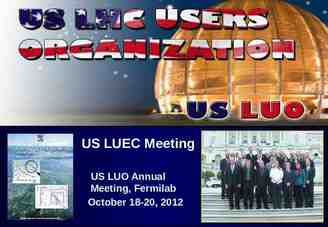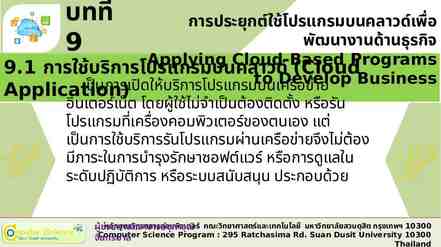Information Security CS 526 Topic 11 Web Security Part 1 CS526 Topic
35 Slides739.00 KB

Information Security CS 526 Topic 11 Web Security Part 1 CS526 Topic 11: Web Security Part 1 1

What will the following program output? #include stdio.h void main() { int x; int y; y (x 3) (x 4); printf("%d %d\n", x, y); } CS526 Topic 11: Web Security Part 1 2

Readings for This Lecture Wikipedia – – – – CS526 HTTP Cookie Same Origin Policy Cross Site Scripting Cross Site Request Forgery Topic 11: Web Security Part 1 3

Background Many sensitive tasks are done through web – Online banking, online shopping – Database access – System administration Web applications and web users are targets of many attacks – – – – – CS526 Cross site scripting SQL injection Cross site request forgery Information leakage Session hijacking Topic 11: Web Security Part 1 4

Web Browser and Network request Browser Web site reply OS Hardware Network Browser sends requests Web site sends response pages, which may include code Interaction susceptible to network attacks CS526 Topic 11: Web Security Part 1 5

Web Security/Privacy Issues Secure communications between client & server – HTTPS (HTTP over Secure Socket Layer) User authentication & session management – Cookies & other methods Active contents from different websites – Protecting resources maintained by browsers Web application security Web site authentication (e.g., anti-phishing) Privacy concerns CS526 Topic 11: Web Security Part 1 6

HTTP: HyperText Transfer Protocol Browser sends HTTP requests to the server – – – – Methods: GET, POST, HEAD, GET: to retrieve a resource (html, image, script, css, ) POST: to submit a form (login, register, ) HEAD Server replies with a HTTP response Stateless request/response protocol – Each request is independent of previous requests – Statelessness has a significant impact on design and implementation of applications CS526 Topic 11: Web Security Part 1 7

Use Cookies to Store State Info Cookies – A cookie is a name/value pair created by a website to store information on your computer Enters form data Browser Response cookies Server Request cookies Browser Returns data Server Http is stateless protocol; cookies add state CS526 Topic 11: Web Security Part 1 8

Cookies Fields An example cookie from my browser – – – – – – CS526 Name session-token Content "s7yZiOvFm4YymG .” Domain .amazon.com Path / Send For Any type of connection Expires Monday, September 08, 2031 7:19:41 PM Topic 11: Web Security Part 1 9

Cookies Stored by the browser Used by the web applications – used for authenticating, tracking, and maintaining specific information about users e.g., site preferences, contents of shopping carts – data may be sensitive – may be used to gather information about specific users Cookie ownership – Once a cookie is saved on your computer, only the website that created the cookie can read it CS526 Topic 11: Web Security Part 1 10

Web Authentication via Cookies HTTP is stateless – How does the server recognize a user who has signed in? Servers can use cookies to store state on client – After client successfully authenticates, server computes an authenticator and gives it to browser in a cookie Client cannot forge authenticator on his own (session id) – With each request, browser presents the cookie – Server verifies the authenticator CS526 Topic 11: Web Security Part 1 11

A Typical Session with Cookies client server POST /login.cgi Set-Cookie:authenticator GET /restricted.html Cookie:authenticator Verify that this client is authorized Check validity of authenticator Restricted content Authenticators must be unforgeable and tamperproof (malicious clients shouldn’t be able to modify an existing authenticator) CS526 How to Security design Topic 11: Web Partit? 1 12

Cross Site Scripting CS526 Topic 11: Web Security Part 1 13

Client Side Scripting Web pages (HTML) can embed dynamic contents (code) that can be executed on the browser JavaScript – embedded in web pages and executed inside browser Java applets – small pieces of Java bytecodes that execute in browsers Browser extensions (plug-ins) provide further client-side programming abilities – E.g., Flash CS526 Topic 11: Web Security Part 1 14

HTML and Scripting html P script Browser receives content, displays HTML and executes scripts var num1, num2, sum num1 prompt("Enter first number") num2 prompt("Enter second number") sum parseInt(num1) parseInt(num2) alert("Sum " sum) /script /html CS526 Topic 11: Web Security Part 1 15

Scripts are Powerful Client-side scripting is powerful and flexible, and can access the following resources – Local files on the client-side host read / write local files – Webpage resources maintained by the browser Cookies Domain Object Model (DOM) objects – steal private information – control what users see – impersonate the user – Communicating with websites (via XMLHttpRequest) CS526 Topic 11: Web Security Part 1 16

Domain Object Model (DOM) Object-oriented model to represent webpages that allow programming access in Javascript CS526 Topic 11: Web Security Part 1 17

Browser as an Operating System Web users visit multiple websites simultaneously A browser serves web pages (which may contain programs) from different web domains – i.e., a browser runs programs provided by mutually untrusted entities – Running code one does not know/trust is dangerous – A browser also maintains resources created/updated by web domains Browser must confine (sandbox) these scripts so that they cannot access arbitrary local resources Browser must have a security policy to manage/protect browser-maintained resources and to provide separation among mutually untrusted scripts CS526 Topic 11: Web Security Part 1 18

Sandbox A security mechanism for separating/limiting running programs – Running untrusted programs. E.g., javascripts in webpages, mobile apps – Running programs that are likely to be exploited. E.g., network daemon programs Implementation: Clearly identify what resources a program needs and cut off the rest – Examples include operating system–level virtualization (such as Unix chroot), virtual machine monitors (VMMs), Java applets, CS526 Topic 11: Web Security Part 1 19

Same Origin Policy The basic security model enforced in the browser SoP isolates the scripts and resources downloaded from different origins – E.g., evil.org scripts cannot access bank.com resources Use origin as the security principal – Note that the concept of user accounts does not apply here as security principals Origin domain name protocol port – all three must be equal for origin to be considered the same CS526 Topic 11: Web Security Part 1 20

Same Original Policy: What it Controls Same-origin policy applies to the following accesses: – – – – – CS526 manipulating browser windows URLs requested via the XmlHttpRequest manipulating frames (including inline frames) manipulating documents (included using the object tag) manipulating cookies Topic 11: Web Security Part 1 21

Problems with S-O Policy Poorly enforced on some browsers – Particularly older browsers Limitations if site hosts unrelated pages – Example: Web server often hosts sites for unrelated parties http://www.example.com/account/ http://www.example.com/otheraccount/ – Same-origin policy allows script on one page to access properties of document from another Can be bypassed in Cross-Site-Scripting attacks Usability: Sometimes prevents desirable cross-origin resource sharing CS526 Topic 11: Web Security Part 1 22

Browser Architecture: One Process versus Multiple Processes Most processes (e.g., Firefox, Internet Explorer) use one process for a web browser – Multiple threads are used for rendering different webpages Chrome uses multiple processes – Use OS protection mechanism to ensure that webpages from different sites cannot easily interact Because they run in different processes – Reliability advantage: crashing in rendering one website doesn’t affect another – Security advantage: vulnerability in rendering does not compromise other sites; isolate plug-ins – Uses 3 types of processes: browser, renderers, plug-ins CS526 Topic 11: Web Security Part 1 23

Cross Site Scripting (XSS) Recall the basics – scripts embedded in web pages run in browsers – scripts can access cookies get private information – and manipulate DOM objects controls what users see – scripts controlled by the same-origin policy Why would XSS occur – Web applications often take user inputs and use them as part of webpage (these inputs can have scripts) CS526 Topic 11: Web Security Part 1 24

How XSS Works on Online Blog Everyone can post comments, which will be displayed to everyone who view the post Attacker posts a malicious comment that includes scripts (which reads local authentication credentials and send of to the attacker) Anyone who view the post can have local authentication cookies stolen Web apps will check that posts do not include scripts, but the check sometimes fail. Bug in the web application. Attack happens in browser. CS526 Topic 11: Web Security Part 1 25

Effect of the Attack Attacker can execute arbitrary scripts in browser Can manipulate any DOM component on victim.com – Control links on page – Control form fields (e.g. password field) on this page and linked pages. Can infect other users: MySpace.com worm. CS526 Topic 11: Web Security Part 1 26

MySpace.com (Samy worm) Users can post HTML on their pages – MySpace.com ensures HTML contains no script , body , onclick, a href javascript:// – However, attacker find out that a way to include Javascript within CSS tags: div style “background:url(‘javascript:alert(1)’)” And can hide “javascript” as “java\nscript” With careful javascript hacking: – Samy’s worm: infects anyone who visits an infected MySpace page and adds Samy as a friend. – Samy had millions of friends within 24 hours. More info: CS526 http://namb.la/popular/tech.html Topic 11: Web Security Part 1 27

Avoiding XSS bugs (PHP) Main problem: – Input checking is difficult --- many ways to inject scripts into HTML. Preprocess input from user before echoing it PHP: htmlspecialchars(string) & & " " < > ' ' – htmlspecialchars( " a href 'test' Test /a ", ENT QUOTES); Outputs: <a href 'test'>Test</a> CS526 Topic 11: Web Security Part 1 28

Avoiding XSS bugs (ASP.NET) ASP.NET 1.1: – Server.HtmlEncode(string) Similar to PHP htmlspecialchars – validateRequest: (on by default) Crashes page if finds script in POST data. Looks for hardcoded list of patterns. Can be disabled: %@ Page validateRequest “false" % CS526 Topic 11: Web Security Part 1 29

Cross site request forgery CS526 Topic 11: Web Security Part 1 30

Cross site request forgery (abbrev. CSRF or XSRF) Also known as one click attack or session riding Effect: Transmits unauthorized commands from a user who has logged in to a website to the website. Recall that a browser attaches cookies set by domain X to a request sent to domain X; the request may be from another domain – Site Y redirects you to facebook; if you already logged in, the cookie is attached by the browser CS526 Topic 11: Web Security Part 1 31

CSRF Explained Example: – User logs in to bank.com. Forgets to sign off. – Session cookie remains in browser state – Then user visits another site containing: form name F action http://bank.com/BillPay.php input name recipient value badguy script document.F.submit(); /script – Browser sends user auth cookie with request Transaction will be fulfilled Problem: – The browser is a confused deputy; it is serving both the websites and the user and gets confused who initiated a request CS526 Topic 11: Web Security Part 1 32

Real World CSRF Vulnerabilities Gmail NY Times ING Direct (4th largest saving bank in US) YouTube Various DSL Routers Purdue WebMail PEFCU Purdue CS Portal CS526 Topic 11: Web Security Part 1 33

Prevention Server side: – use cookie hidden fields to authenticate a web form hidden fields values need to be unpredictable and userspecific; thus someone forging the request need to guess the hidden field values – requires the body of the POST request to contain cookies Since browser does not add the cookies automatically, malicious script needs to add the cookies, but they do not have access because of Same Origin Policy User side: – logging off one site before using others – selective sending of authentication tokens with requests (may cause some disruption in using websites) CS526 Topic 11: Web Security Part 1 34

Coming Attractions More Web Security Issues – SQL injection – Side channel information leakage – Browser fingerprinting CS526 Topic 11: Web Security Part 1 35






